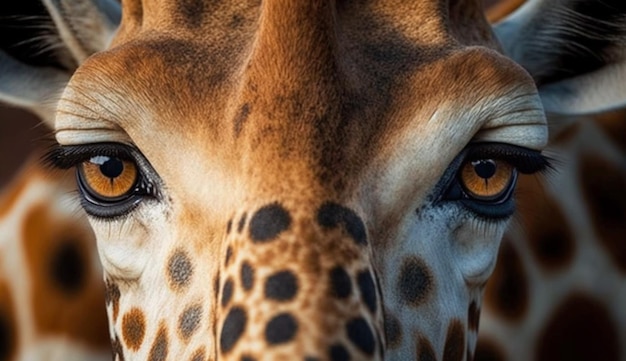Fascinating Facts about Giraffes

Giraffes are the tallest land animals, reaching heights of up to 18 feet.
A giraffe’s neck contains the same number of vertebrae as a human’s.
Despite their long necks, giraffes have just seven vertebrae, like humans.
The tongue of a giraffe can grow up to 18 inches long.
Giraffes have a unique coat pattern, with no two individuals having the same pattern.
Giraffes have the ability to run at speeds of up to 35 miles per hour.
Female giraffes give birth standing up, resulting in a four to six-foot drop for the newborn.
Giraffes can clean their ears with their exceptionally long tongues.
Contrary to popular belief, giraffes do make sounds, including low grunts and bleating.
Giraffes have a powerful kick, capable of killing lions and predators.
A baby giraffe is already six feet tall when it is born.
Giraffes have a prehensile tongue, allowing them to grab leaves and branches.
Giraffes only need 5-30 minutes of sleep in a 24-hour period.
Male giraffes fight by swinging their long necks at each other, a practice known as necking.
Giraffes have a unique way of drinking water, splaying their front legs and bending their necks.
Giraffes have really long eyelashes to protect their eyes from debris.
Giraffes have bluish tongues, which is thought to protect them from sunburn.
The spots on a giraffe are not just on the fur but also on the skin.
Giraffes have a special valve in their necks to prevent them from passing out when they lower their heads.
Fascinating Facts about Giraffes part 2
A giraffe’s heart weighs around 25 pounds and is two feet long.
The average lifespan of a giraffe is 25 years, but they can live up to 40 years in captivity.
Giraffes have excellent eyesight, with a wide field of view.
Giraffes are herbivores, feasting on leaves, twigs, and fruit from tall trees.
Giraffes spend most of their time eating, consuming up to 75 pounds of food in a day.
Giraffes have long, muscular tongues that can pull leaves off branches.
Giraffes have a four-chambered stomach, just like cows and other ruminants.
Giraffes have a specialized circulatory system to pump blood up their long necks.
Giraffes are social animals, often found in groups called towers or herds.
Contrary to their calm appearance, giraffes can be aggressive and territorial.
A giraffe’s neck is so long that it can reach the ground without straining.
The skin of a giraffe can be up to two inches thick, protecting them from thorny branches.
Giraffes have a unique walking gait, moving both legs on one side of their body simultaneously.
The ossicones on a giraffe’s head are actually not antlers but bony protrusions covered in skin.
Giraffes have a highly developed sense of smell, using it to detect predators.
Giraffes can eat up to 75 pounds of food per day, but they only drink water every few days.
Giraffes have long, muscular tails that they can use to swat away flies and insects.
Giraffes are capable of making a variety of vocalizations, including grunts, moans, and bellows.
Giraffes have a sloping back, which helps them maintain balance while walking and running.
Giraffes have thick, sticky saliva, which they use to clean their eyes and ears.
Giraffes have excellent memory and can remember individual faces of other giraffes.
Giraffes have a complex social structure, with females forming strong bonds and males competing for mates.
The heart of a giraffe beats around 170 times per minute, twice as fast as a human’s.
Giraffes have a distinctive smell, which is thought to help them recognize each other.
Giraffes have long, slender legs that allow them to run quickly and gracefully.
Giraffes have specially adapted blood vessels in their legs to prevent blood pooling when they lower their heads to drink.